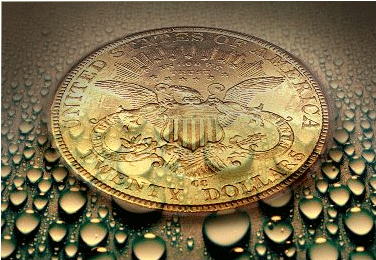By Jeff Garrett for Numismatic Guaranty Corporation ……
When deciding what to collect, concentrate on coins with proven demand.
Last year, the sale of an Apple 1 computer made headlines when it sold at auction for over $900,000 to the Henry Ford Museum in Michigan. These are incredibly iconic relics of the early development of personal computers. There is also the added desirability given the gigantic success of Apple Computers in recent years. A few weeks ago, another example (one of about 50 that survive) sold for around $275,000 on eBay. The huge gulf in price seems hard to understand when compared to the market for rare coins. Could you imagine a rare coin selling for $1,000,000 and then dropping to $275,000 a few months later? The difference is liquidity.
 Rare coins have a liquidity factor that is nearly unmatched when compared to other collectibles. The above mentioned sales for an Apple 1 computer clearly illustrates the thinness of the market for these machines. Two buyers battling it out may be difficult to replicate even a few months later.
Rare coins have a liquidity factor that is nearly unmatched when compared to other collectibles. The above mentioned sales for an Apple 1 computer clearly illustrates the thinness of the market for these machines. Two buyers battling it out may be difficult to replicate even a few months later.
The market for most collectibles, including art, antiques, vintage cars, rare books, and sports memorabilia is much thinner than for rare coins. You might read headlines about fantastic prices realized by great works of art, but for the average collector, these are of little consequence. Most buyers of art, for instance, have to wait years for a return on their investment. Other collectible fields also carry much larger profit margins. If you were to purchase a $50,000 painting from about any gallery in the United States and decide months later to sell, you would face a pretty serious haircut. The same could be said for almost any collectible. The recurring theme is liquidity. How many collectors are there for the object and what means do you have of reaching them?
I live in Lexington, Kentucky, which is considered the Horse Capitol of the world by many. Each year there are horse auctions conducted a few miles from where I live. The sales generate hundreds of millions of dollars in revenue, with individual horses routinely selling for millions. The interesting part is that the sales results are very unpredictable. A given horse may sell for $300,000 or $3,000,000 depending on who is bidding and how badly they want the animal. Could you imagine this sort of unpredictability in the rare coin market? The rare coin business would be much smaller if that were the case.
Liquidity is an incredibly important factor when considering rare coin collecting strategies. As illustrated in the above examples, rare coins are much more liquid than about any other collectible. Liquidity should also be considered when choosing WHICH rare numismatic items to collect. Some rare coins are much more liquid than others. There are thousands of collectors in the United States interested in silver dollars. This contrasts to just a few, such as myself, who collect small size Kentucky Nationals. When it comes time to sell, you will need multiple buyers vying for your material.
Liquidity has been an apparent problem with several of the auctions for high material in recent months. Some of the coins that had been selling for high six figures or more were selling at discounts to what similar or the exact coins sold for a few years ago. This can be caused by just a few individual buyers becoming sellers instead of buyers. Inversely, the lack of competitive bidding creates a buying opportunity for those willing to fill the void. Even with expensive coins, the liquidity factor comes into play. Million dollar Morgan Dollars are still strong, yet the flood of Colonial coinage being offered has depressed prices for that specialty.
The ultimate liquid American coinage is probably common date United States gold coins. These are often referred to as “generic gold”. Several large rare coin companies issue price grids for these with narrow buy/sell spreads for each grade. These fluctuate in price based on demand at any given time. The premium to gold price is smaller than at any time since I have been in the coin business. These issues are usually reserved for investors who have been drawn to coins because of the precious metal content. Later many become interested in more numismatically challenging coins. The narrow buy/sell spread and the nearly instant liquidity of these are the prime attraction for most.
Many collectors like to be contrarian buyers and feel this is the best chance for purchasing coins that will later appreciate in price. This can be tricky for several reasons. Liberty Half Eagles are a good example. The Charlotte and Dahlonega issues are very popular with dozens of serious collectors in all grades. The coins have done well over the years and there is little doubt that the collector base will continue to grow. Several of the Philadelphia Mint issues are of similar rarity, especially in high grades. The problem is that there are far fewer collectors of Half Eagles from the Philadelphia Mint. This may change over time, but my guess is that the liquidity factor will always favor the more popular southern Mint coinage.
When deciding what to collect there are many factors to consider. Patience may pay off in the long run if you choose an obscure area of the market. For the safest play, concentrate on coins with proven demand.
Questions about the rare coin market? Send them to [email protected].




